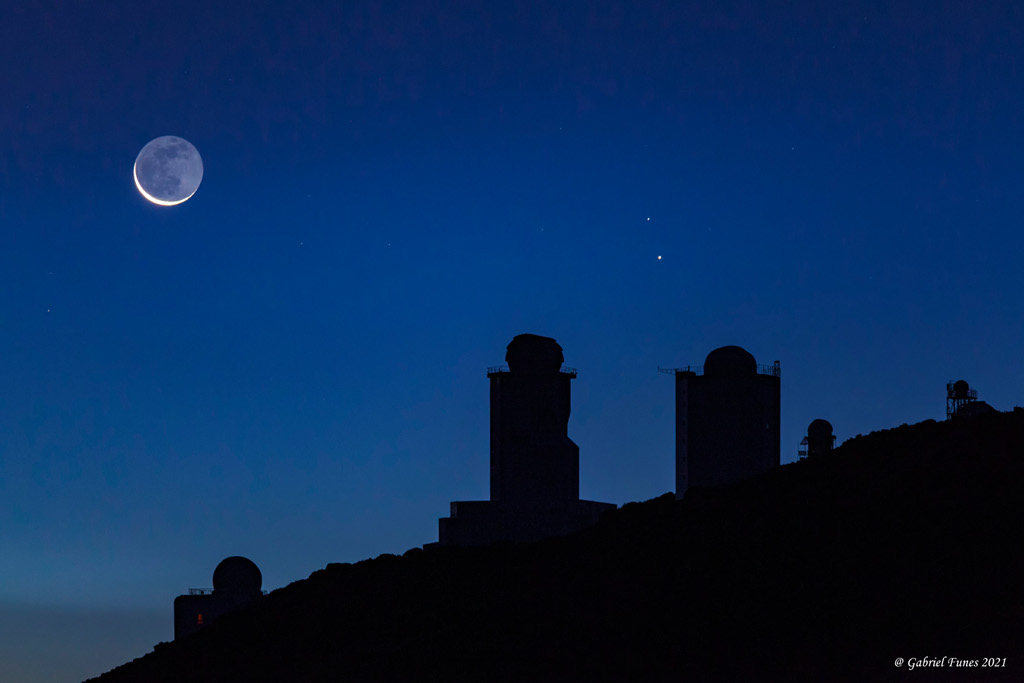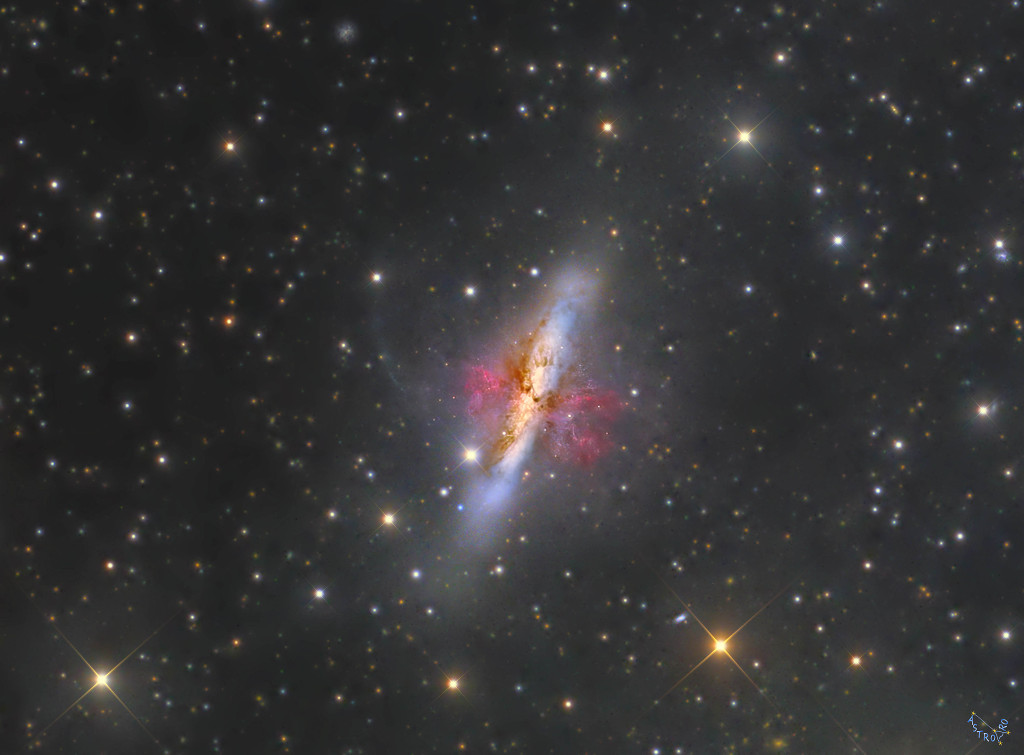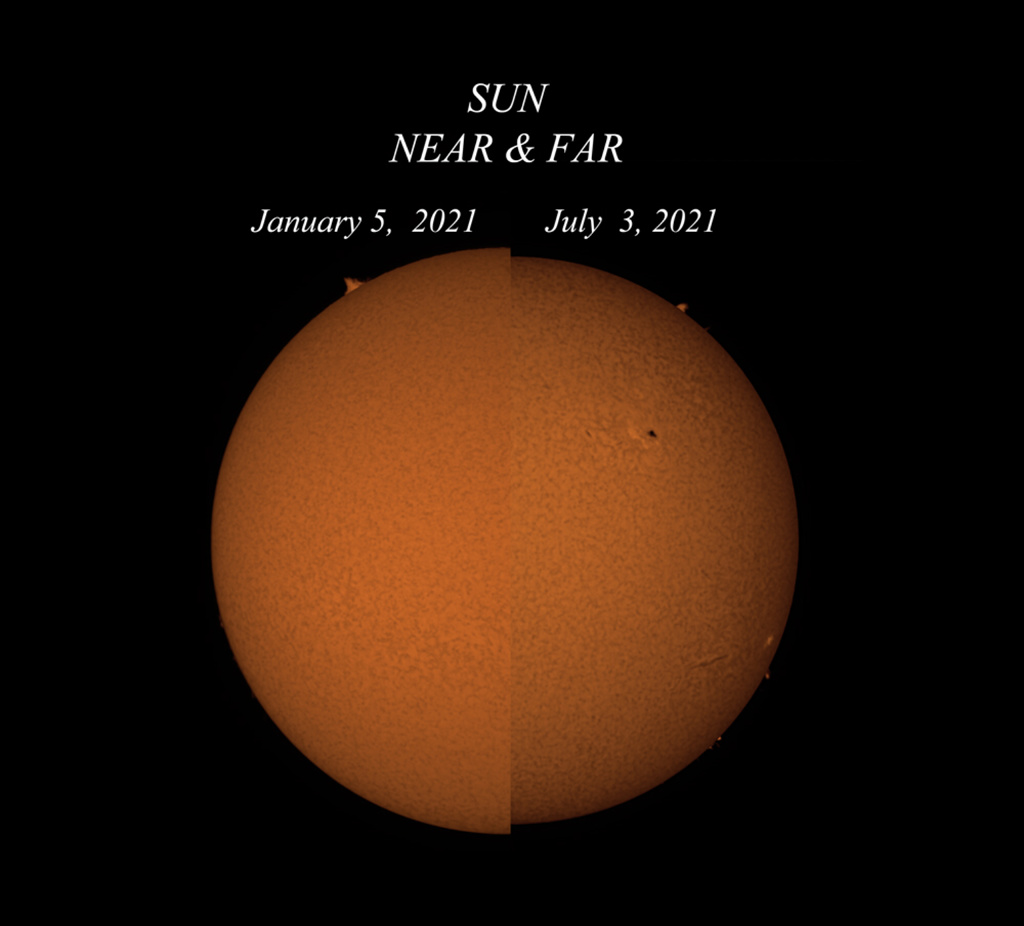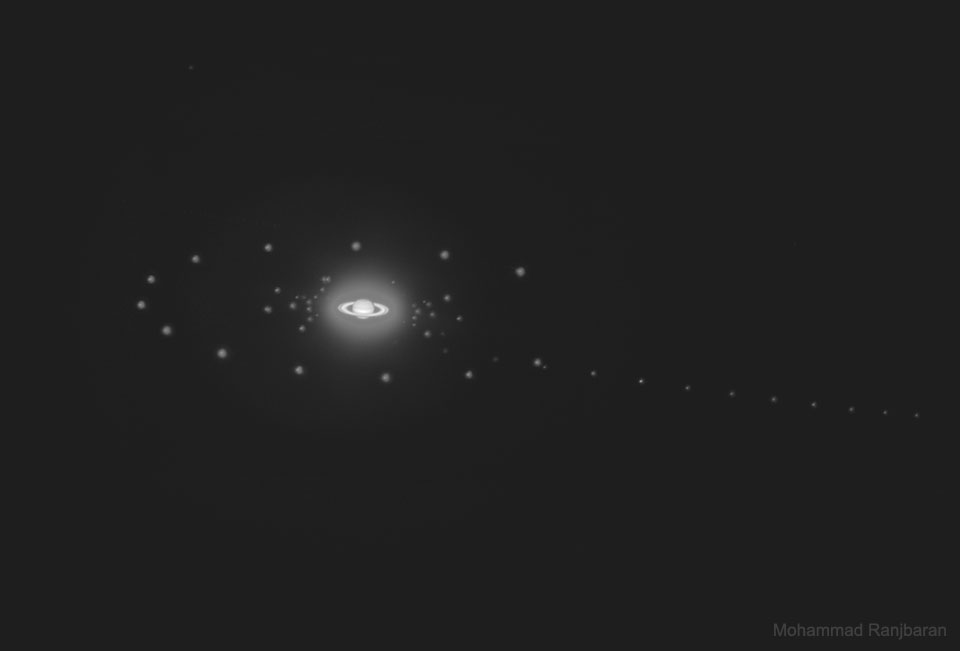Nombre total de pages vues
15/07/2021
SANTé/MéDECINE - Le cancer
ASTRONOMY - GW200115: Simulation of a Black Hole Merging with a Neutron Star
2021 July 14
Video Credit: Simulation: S.V. Chaurasia (Stockholm U.), T. Dietrich (Potsdam U. & MPIGP);
Visualization: T. Dietrich (Potsdam U. & MPIGP), N. Fischer, S. Ossokine, H. Pfeiffer (MPIGP)
Explanation: What happens when a black hole destroys a neutron star? Analyses indicate that just such an event created gravitational wave event GW200115, detected in 2020 January by LIGO and Virgo observatories. To better understand the unusual event, the featured visualization was created from a computer simulation. The visualization video starts with the black hole (about 6 times the Sun's mass) and neutron star (about 1.5 times the Sun's mass) circling each other, together emitting an increasing amount of gravitational radiation. The picturesque pattern of gravitational wave emission is shown in blue. The duo spiral together increasingly fast until the neutron star becomes completely absorbed by the black hole. Since the neutron star did not break apart during the collision, little light escaped -- which matches the lack of an observed optical counterpart. The remaining black hole rings briefly, and as that dies down so do the emitted gravitational waves. The 30-second time-lapse video may seem short, but it actually lasts about 1000 times longer than the real merger event.
13/07/2021
ASTRONOMY - Saturn's Iapetus: Painted Moon in 3D
2021 July 13
Image Credit: NASA, ESA, JPL, SSI, Cassini Imaging Team; 3D Rendering: NASA's VTAD
Explanation: What has happened to Saturn's moon Iapetus? Vast sections of this strange world are dark brown, while others are as bright white. The composition of the dark material is unknown, but infrared spectra indicate that it possibly contains some dark form of carbon. Iapetus also has an unusual equatorial ridge that makes it appear like a walnut. To help better understand this seemingly painted moon, NASA directed the robotic Cassini spacecraft orbiting Saturn to swoop within 2,000 kilometers in 2007. Iapetus is pictured here in 3D. A huge impact crater seen in the south spans a tremendous 450 kilometers and appears superposed on an older crater of similar size. The dark material is seen increasingly coating the easternmost part of Iapetus, darkening craters and highlands alike. Close inspection indicates that the dark coating typically faces the moon's equator and is less than a meter thick. A leading hypothesis is that the dark material is mostly dirt leftover when relatively warm but dirty ice sublimates. An initial coating of dark material may have been effectively painted on by the accretion of meteor-liberated debris from other moons.
12/07/2021
ASTRONOMY - Mercury and the Da Vinci Glow
2021 July 10
Image Credit & Copyright: Gabriel Funes
Explanation: On July 8th early morning risers saw Mercury near an old Moon low on the eastern horizon. On that date bright planet, faint glow of lunar night side, and sunlit crescent were captured in this predawn skyscape from Tenerife's Teide National Park in the Canary Islands. Never far from the Sun in planet Earth's sky, the fleeting inner planet shines near its brightest in the morning twilight scene. Mercury lies just below the zeta star of the constellation Taurus, Zeta Tauri, near the tip of the celestial bull's horn. Of course the Moon's ashen glow is earthshine, earthlight reflected from the Moon's night side. A description of earthshine, in terms of sunlight reflected by Earth's oceans illuminating the Moon's dark surface, was written over 500 years ago by Leonardo da Vinci. Waiting for the coming dawn in the foreground are the Teide Observatory's sentinels of the Sun, also known as (large domes left to right) the THEMIS, VTT, and GREGOR solar telescopes.
09/07/2021
AERONAUTIQUE - Histoire de l'aviation - (1) - Les précurseurs
ASTRONOMY - M82: Starburst Galaxy with a Superwind
2021 July 9
Image Credit & Copyright: Team ARO, Alentejo Remote Observatory
Explanation: M82 is a starburst galaxy with a superwind. In fact, through ensuing supernova explosions and powerful winds from massive stars, the burst of star formation in M82 is driving a prodigious outflow. Evidence for the superwind from the galaxy's central regions is clear in sharp telescopic snapshot. The composite image highlights emission from long outflow filaments of atomic hydrogen gas in reddish hues. Some of the gas in the superwind, enriched in heavy elements forged in the massive stars, will eventually escape into intergalactic space. Triggered by a close encounter with nearby large galaxy M81, the furious burst of star formation in M82 should last about 100 million years or so. Also known as the Cigar Galaxy for its elongated visual appearance, M82 is about 30,000 light-years across. It lies 12 million light-years away near the northern boundary of Ursa Major.
08/07/2021
ASTRONOMY - Perihelion to Aphelion
2021 July 8
Image Credit & Copyright: Richard Jaworski
Explanation: Aphelion for 2021 occurred on July 5th. That's the point in Earth's elliptical orbit when it is farthest from the Sun. Of course, the distance from the Sun doesn't determine the seasons. Those are governed by the tilt of Earth's axis of rotation, so July is still summer in the north and winter in the southern hemisphere. But it does mean that on July 5 the Sun was at its smallest apparent size when viewed from planet Earth. This composite neatly compares two pictures of the Sun, both taken with the same telescope and camera. The left half was captured close to the date of the 2021 perihelion (January 2), the closest point in Earth's orbit. The right was recorded just before the aphelion in 2021. Otherwise difficult to notice, the change in the Sun's apparent diameter between perihelion and aphelion amounts to a little over 3 percent.
06/07/2021
ASTRONOMY - Saturn and Six Moons
2021 July 6
Image Credit & Copyright: Mohammad Ranjbaran; MR Thanks: Amir Ehteshami
Explanation: How many moons does Saturn have? So far 82 have been confirmed, the smallest being only a fraction of a kilometer across. Six of its largest satellites can be seen here in a composite image with 13 short exposure of the bright planet, and 13 long exposures of the brightest of its faint moons, taken over two weeks last month. Larger than Earth's Moon and even slightly larger than Mercury,Saturn's largest moon Titan has a diameter of 5,150 kilometers and was captured making nearly a complete orbit around its ringed parent planet. Saturn's first known natural satellite, Titan was discovered in 1655 by Dutch astronomer Christiaan Huygens, in contrast with several newly discovered moons announced in 2019. The trail on the far right belongs to Iapetus, Saturn's third largest moon. The radius of painted Iapetus' orbit is so large that only a portion of it was captured here. Saturn leads Jupiter across the night sky this month, rising soon after sunset toward the southeast, and remaining visible until dawn.
05/07/2021
ASTRONOMY - Simulation: Formation of the First Stars
2021 June 30
Video Credit: Harley Katz (U. Oxford) et al.
Explanation: How did the first stars form? To help find out, the SPHINX computer simulation of star formation in the very early universe was created, some results of which are shown in the featured video. Time since the Big Bang is shown in millions of years on the upper left. Even 100 million years after the Big Bang, matter was spread too uniformly across the cosmos for stars to be born. Besides background radiation, the universe was dark. Soon, slight matter clumps rich in hydrogen gas begin to coalesce into the first stars. In the time-lapse video, purple denotes gas, white denotes light, and gold shows radiation so energetic that it ionizes hydrogen, breaking it up into charged electrons and protons. The gold-colored regions also track the most massive stars that die with powerful supernovas. The inset circle highlights a central region that is becoming a galaxy. The simulation continues until the universe was about 550 million years old. To assess the accuracy of the SPHINX simulations and the assumptions that went into them, the results are not only being compared to current deep observations, but will also be compared with more direct observations of the early universe planned with NASA's pending James Webb Space Telescope.
INSECTES - Le moustique-tigre
ASTRONOMY - NGC 1898: Globular Cluster in the Large Magellanic Cloud
025 December 28 NGC 1898: Globular Cluster in the Large Magellanic Cloud Image Credit: ESA / Hubble & NASA Explanation: Jewels don...
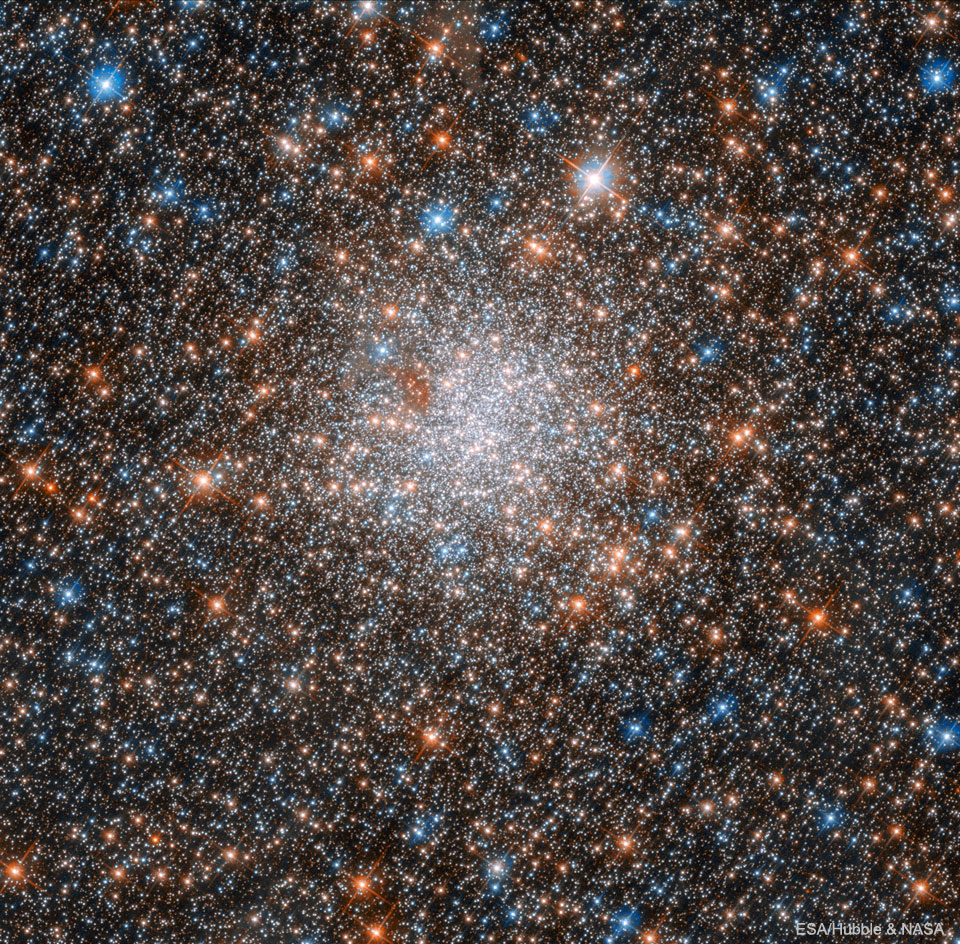
-
2022 September 26 All the Water on Planet Earth Illustration Credit: Jack Cook, Adam Nieman, Woods Hole Oceanographic Institution ; Data ...
-
2025 May 11 The Surface of Venus from Venera 14 Image Credit: Soviet Planetary Exploration Program , Venera 14 ; Processing & Copyri...

